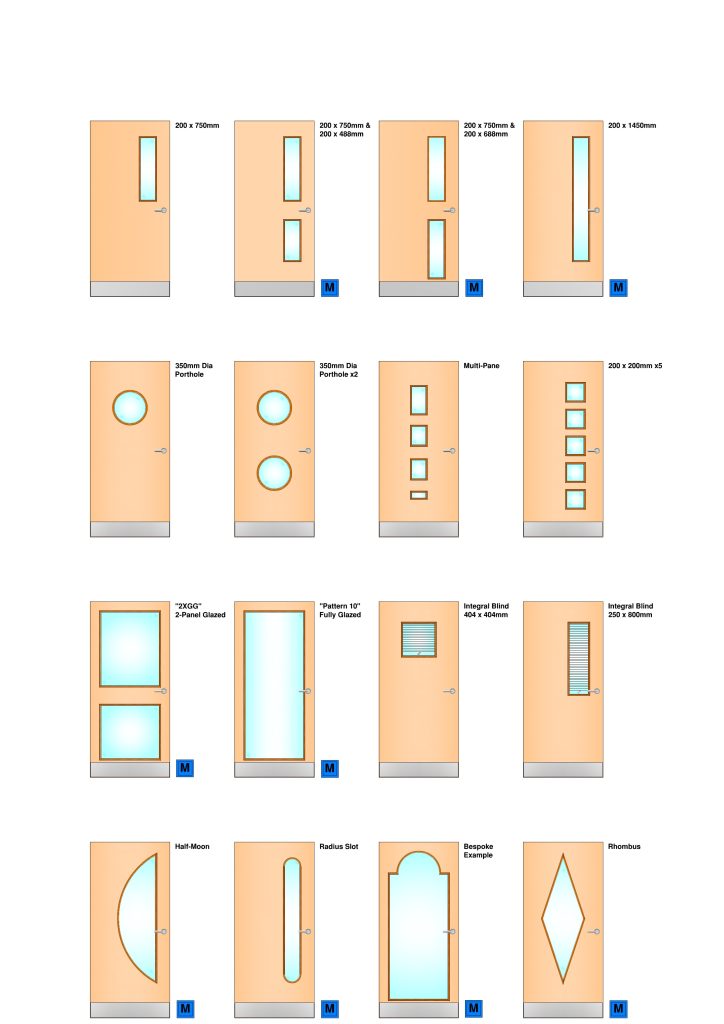Vision panels can be any shape or size a designer wishes, with the only limitations being the suitability of a fixing method and the overall size compatibility with any relevant fire ratings the door may have.
Vision panels must be secured to apertures using a glazing bead and – where required – a suitable intumescent glazing gasket / seal. Glazing beads can be made of a variety of different timbers, generally to conform to the finish of the door, for example an Oak veneered door will typically have Oak glazing beads. Occasionally, however, there is a requirement for a contrasting coloured glazing bead to emphasise the edges of the vision panel, for the benefit of elderly people or those with difficulty seeing. Some examples of different glazing systems are shown below. Other considerations need to be made for disabled people and young children, where visibility through a door (as to what is on the other side of a closed door) may necessitate a ‘Part M’ compliant vision panel, which is at a specific height to enable the user to see what may be on the other side – read more about Disability Access Requirements.
